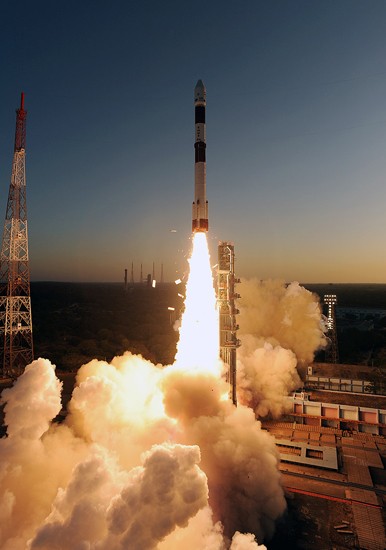I am sure you all might be aware of the recent successful launch of India’s tried and tested PSLV (Polar Satellite Launch Vehicle) rocket. The PSLV C20 lifted off from from the East Coast of India and carried as many as seven satellites belonging to various organizations – making it a truly global mission. The reason why I am talking about this here is the fact that one of the seven satellites that went up in space with the PSLV was powered by – believe it or not – a Google Nexus One!

Google’s Nexus One might be an old dog now – but not oo old to be not capable of powering a satellite that just recently blasted off into space. That’s right, a Google Nexus One is the thing that powers this new smartphone powered satellite christened the STRaND-1. This also makes the STRaND -1, the first smartphone powered satellite to orbit the earth.
This is not a full-fledged satellite as you might have thought – and happens to fall in the category of nano satellites which are way smaller than your conventional satellites. The STRaND-1 has a Google Nexus One as its brain and the device runs four apps according to a Popular Science report.
STRaND-1 stands for “Surrey Training, Research, and Nanosatellite Demonstrator,” and the aim of this nano satellite is to display the power of a modern smartphone. It would be used to collect various scientific data and to capture a few images and test the earth’s magnetic field once its up in orbit. Another report claims that the satellite would also be able to display user uploaded videos while in space. Now, the weird thing about this is, who’s gonna watch them up there?
The other six satellites that were successfully injected into space that day included the SARAL- a creation born out of collaboration between the Indian and the French space agencies. It also included the Canadian satellite, NEOSSat (Near-Earth Object Surveillance Satellite). The NEOSSat is designed to detect and warn hazardous objects that might stray on a collision course towards earth. Another Canadian satellite included in the mission was called “Sapphire”. Then there are the twin satellites that were a part of Austria’s BRIght Target Explorer (BRITE) mission. The objective of these is to study the brightest stars in the night sky by measuring how their brightness levels change over time. The mission also included another satellite from Denmark.




